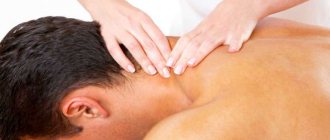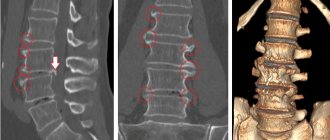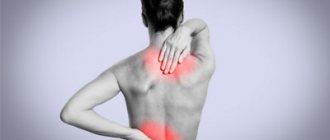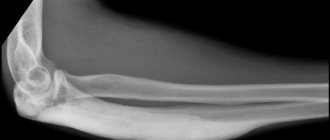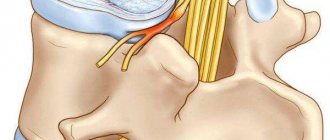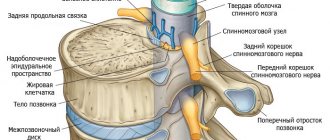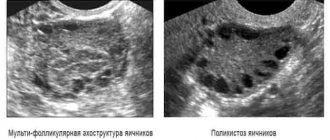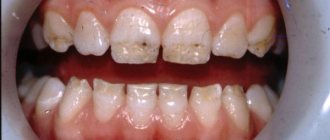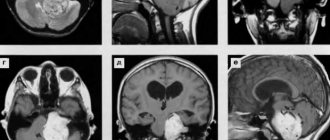Osteochondrosis is a complex of serious degenerative-dystrophic destruction of the cartilage tissue located between the vertebrae of the spinal column. In this pathological phenomenon, the discs themselves are affected, their height changes, and bone tissue in the cervical region is damaged. The pathology has similar symptoms to some diseases . The main thing is to notice the first signals of the body in time and undergo diagnostics with the necessary treatment, otherwise osteochondrosis will begin to progress, causing migraines and blood circulation disorders. Basically, the pathology develops in people who have reduced physical activity. This is due to the fact that the exchange of mineral salts in the body is disrupted, which causes thinning of the connective tissue, as well as a decrease in their strength.
Osteochondrosis of the cervical spine
Causal factors of the disease
The neck is the most mobile part of the body, so it experiences constant stress, as it is obliged to hold the head in a certain position. Some factors can have a negative impact on this area of the body and create inflammatory processes in the connective tissues of the body.
Structure of the human head and neck
Basic functions of the neck
The reasons for the development of pathological deviations in the cervical vertebrae are:
- non-compliance with nutritional rules, which causes excess weight gain;
- functional change in the musculoskeletal system;
- physical inactivity;
- neck or spinal column injury;
- excessive physical pressure on the spinal column;
- stress;
- physical prolonged tension of the cervical muscle frame;
- heredity;
- abnormalities of bone tissue development.
Osteochondrosis is a complex of degenerative cartilage disorders
All these factors negatively affect the cervical vertebrae, creating pressure, which leads to involuntary tonic contraction of smooth and skeletal muscles. Which leads to the formation of hemodiscirculatory processes, a slowdown in metabolic functions, the development of dysfunctions and degenerative changes in cartilage. The vertebrae begin to deform, acquiring a non-standard shape, and often extend beyond the spinal column.
Why does osteochondrosis occur?
Stages of osteochondrosis
Osteochondrosis of the cervical vertebrae is a disease, the impact of which weakens the discs between the vertebrae, leading to changes in the texture of the discs, vertebrae, and neck joints. At the first stage, the symptoms are almost invisible, since changes in the cartilaginous vertebrae have just begun. The following signs are observed:
- Headache.
- Unpleasant sensations in the neck, arms, shoulders.
- Slight limitation of neck motor activity.
- Brief loss of vision.
- The sensitivity of the collar area decreases.
Symptoms of the disease
The very initial stage of the pathological process is clearly visible by some signs.
- cephalgic syndrome . It is formed during cerebral vasospasm, compression of the spinal nerves, as well as against the background of involuntary intracranial hypertension. It spreads across the back of the head, neck, affecting the shoulder area and upper limbs. The pain syndrome may resemble a prolonged increase in blood pressure (hypertension), an attack of angina, cerebrovascular accident, and manifest itself in the form of paroxysmal, constant or pulsating character. Anxiety may increase, mood swings occur, concentration decreases, the person becomes irritable and touchy;
- dizziness occurs, coordination of movements is impaired . Everything is accompanied by tinnitus, nausea, vomiting, and disorientation appears. It is not always a sign of only this pathology, as it can manifest itself as a result of otitis media or internal otitis, cardiac dysfunction, cerebral vasospasm or dysfunction of nerve cells. Dizziness is also often observed with a disorder of the vestibular apparatus;
Main manifestations of the disease
Important! There are two types of dizziness. With non-systemic dizziness, lightheadedness and stupor appear, and it is difficult for a person to be in an upright position. But at the same time, objects falling into the field of view do not rotate. And with systemic, circular movement of all objects is manifested, which indicates disturbances in the functioning of the vestibular apparatus, visual perception, and muscle spasms. This is a distinctive sign of dizziness with osteochondrosis.
- painful manifestations in the neck area . Pain sensations are localized not only in muscle tissue, but also in the shoulder area, including the upper limbs. The onset of pain develops suddenly and lasts a long time, or may have a short-term period. If the disease does not become recurrent, then the pain goes away after some time, and will be accompanied by a slight specific sound (crunching);
Pain in the neck
- arterial hypertension . When nerve endings are pinched, a sharp jump in blood pressure occurs. Therefore, if high blood pressure is observed for a long time, this is not a symptom of osteochondrosis. High blood pressure in this disease is combined with cephalalgia, aching pain in the arms, compression of the chest, and the cervical-collar region of the back loses sensitivity. A state of weakness, fatigue, lack of strength in the muscles of the upper limbs.
Why is arterial hypertension dangerous?
Table. Classification of cervical osteochondrosis.
| Stage | Characteristic |
| 1st degree | The lordosis of the neck is slightly smoothed. The occurrence of pain, intensifying while moving the head. The occurrence of tension and weakness in the muscles of the lumbar region. |
| 2nd degree | There is a decrease in the size of fibrocartilaginous formations and compression of the nerve branches. The pain radiates to the shoulders, arms, and intensifies when moving the neck. A cephalgic syndrome develops, a feeling of fatigue, absent-mindedness, and performance decreases. |
| 3rd degree | Painful sensations of a constant nature in the upper extremities, cervical and shoulder areas. Muscle weakness and numbness of the limbs are observed. A herniated disc forms. The neck is inactive and vertigo appears. |
| 4th degree | Fibrous-cartilaginous formations are destroyed. Connective fibers replace destroyed cartilage. The destruction process can simultaneously affect more than one spinal motion segment. The patient is completely disoriented, pain and vertigo increase. |
Stage-by-stage development of pathology
Features of therapy
Cervical osteochondrosis itself is considered quite complex, as it gives quite a lot of complications during the development process. Since this section is the most mobile of all parts of the spine, but is not stable, negative external influences affect it more quickly. Accordingly, the disease progresses quite quickly.
Ideally, it is better to start treatment from the first stage. Moreover, it must combine both medications and therapeutic exercises. At the same time, the lifestyle is improved, loads are normalized, and conditions are created for normal nutrition of the tissues of the spine and discs.
What is the danger of the disease?
Pathology harms the entire human body. With osteochondrosis, blood vessels and nerve roots are tightly compressed, leading to dyscirculatory encephalopathy, cephalgic syndrome develops, and pathologies of the heart rhythm, visual, respiratory systems, concentration and coordination processes are caused.
Types of headaches
The disease tends to be caused by:
- various brain pathologies;
- a number of vestibular, vascular, and autonomic disorders;
- acute violation of spinal circulation with the development of ischemia or hemorrhage (spinal stroke).
Important! In the last stage of the disease, compression of the spinal cord may occur, which can be fatal.
Spinal cord compression treatment
How the disease develops
First stage
- · The most harmless. It practically doesn't show up at all. Symptoms of the disease are minimal. Sometimes pain in the neck area begins to bother me. Unpleasant sensations intensify when turning the head or bending over. If treatment is not started, a chronic condition will arise - the second stage.
Second stage
- · The pain becomes stronger and begins to radiate to the shoulder and arm. The intervertebral disc becomes smaller, and the nerve roots are compressed. General weakness of the body begins. Dizziness.
Third stage
- · Advanced form of the disease. According to the symptoms, the pain resembles a heart attack. The chest expands, changes in heart rhythm begin. Headache.
Stage four - cerebrovascular accident
- · There is noise in the ears. This is the number one symptom of a vertebral artery reaction. It nourishes the cerebellum.
- · Sensitivity at the back of the head is impaired. Symptom number two. The artery supplies the occipital part of the brain. Pain in the crown.
- · Neck goes numb.
- · Loss of sensation in the limbs.
- · Numbness of fingers begins.
Cervical osteochondrosis leads to pinched nerves in the neck. Blood circulation to the brain is impaired. Which leads to migraines, pressure, fainting. Vision decreases, hearing decreases. Speech suffers.
You should consult a doctor at the first symptoms of an uncomfortable condition in the cervical spine.
Features of treatment
The treatment of cervical osteochondrosis is based on the degree of the disease, its characteristic clinical manifestations and form. Treatment can be carried out in the form of:
- non-surgical therapy , the purpose of which is to eliminate symptoms and manifestations of the disease to alleviate the patient’s condition using medications and physiotherapy, therapeutic exercises, massage;
- surgical intervention;
- combined therapy . In this method, surgical intervention is performed, followed by treatment with medications.
Treatment of osteochondrosis of the cervical spine
After a diagnostic examination, the specialist makes a final diagnosis and prescribes the necessary treatment depending on the clinical picture of the disease. Basically, if the disease is at a stage that does not require surgery, complex therapy is prescribed, which includes taking medications, performing therapeutic exercises and undergoing a course of healing massage.
Symptoms of osteochondrosis
With the development of osteochondrosis in different areas of the spine, various symptoms will be observed:
If the cervical spine is affected, the following will be observed:
- Headache pain that does not go away with the use of medications. The quality of vision further deteriorates, spots begin to appear before the eyes, and there will be noise in the ears.
- Oxygen starvation occurs due to the fact that the arteries are compressed. Blood circulation in the brain worsens.
- There may be hiccups and difficulty breathing. Depending on the degree of development of the disease, external symptoms of the disease may appear.
If the thoracic region is affected, pain will be felt in the chest and intercostal area:
- It may still be felt in the upper abdomen. Some people initially mistake it for pain in the heart or stomach. In this case, a violation of the swallowing reflex may appear, and a cough may appear.
- In the middle part of the chest, symptoms will resemble gastritis or ulcers , but the blood pressure will be elevated.
- If the spine in the lower thoracic region is affected, an exacerbation of appendicitis may be mistakenly assumed.
Lumbosacral region:
- Pain occurs in the lower back and legs. This sometimes causes a feeling of numbness in the skin of the legs. Shooting will appear in the lower back after any load.
- If the lesion is quite serious, paralysis can occur. In men, erection and urination are impaired.
- The appearance of any symptoms requires a special course of treatment. Osteochondrosis is treated regardless of the affected area.
Osteochondrosis of the lumbar region
Medications
The doctor prescribes medications aimed at eliminating pain symptoms, inflammation and muscle tension, restoring cartilage tissue, and replenishing the body with a vitamin and mineral complex in the form of capsules, injections, and ointments.
"Analgin"
"Diclofenac"
"Ambene"
Table. Medicines used in therapy.
| Group of drugs | Impact on the body | Medicine and its dosage |
| Analgesics | Analgesic | Paracetamol (500 mg, 4 times a day), Analgin (250-500 mg, 2-3 times a day). |
| Nonsteroidal anti-inflammatory drugs (NSAIDs) | Anti-inflammatory, analgesic, antiplatelet | Nimesulide (100 mg, 2 times / day), Ketonal (100 mg, 2 times / day), Voltaren (50-150 mg per day), Diclofenac (25-50 mg, 2-3 times / day), Nise (100 -200 mg, 2 times / day), Ketanov (10-20 mg, 3-4 times / day), Movalis (7.5 mg per day), Ibuprofen (200 mg, 3-4 times / day), Ortofen ( 100-150 mg per day), Ketorolac (10 mg, 1-4 times / day), Meloxicam (7.5-15 mg per day), Indomethacin (25 mg, 2-3 times / day), Celebrex (100- 200 mg, 2 times / day), Rofecoxib (25-50 mg per day), Arcoxia (30-60 mg per day), Piroxicam (10-30 mg per day), Fastum gel (50-100 mg, applied 2 times /day), Bystrumgel (50-100 mg, 1-2 times a day), Dolobene (50-100 mg, 2-4 times a day). |
| Corticosteroids | Anti-inflammatory, analgesic | Ambene (1 injection per day), Dexamethasone (0.5-9 mg per day). |
| Chondroprotectors | Analgesic, restores cartilage tissue, decongestant | Toad stone (2-3 r/day), Structuvit (2 caps, 2-3 r/day), Artra (1 tablet, 2 r/day), Alflutop (1 ml per day), Kondronova (2 caps, 2- 3 times a day), Teraflex (1 caps, 2-3 times a day), Chondroxide ointment (2-3 times a day), Dona (750 mg, 2 times a day). |
| Muscle relaxants | Analgesic, reducing muscle spasms | Sirdalud (2 mg, 3 times / day), Tizanidine (2-4 mg, 3 times / day), Tizalud (2-4 mg, 3 times / day), Mydocalm (50-150 mg, 2-3 times / day ), Baclofen (5-10 mg, 3 times / day), Carbamazepine (100-200 mg, 1-2 times / day). |
| Vitamins | Improves nerve tissue metabolism | Neurobion (1 tablet, 3 r/day), Unigamma (1 tablet, 1-3 r/day), Combilipen (2 ml per day), Milgamma (2 ml per day), Neuromultivit (1 tablet, 1-3 r/day day), Doppelgerz VIP Osteoprotext with collagen (1 caps per day). |
| Angioprotectors | Improves blood microcirculation | Trental (100 mg, 3 times / day), Actovegin (10-20 ml per day), Curantil (75 mg, 3 times / day), Nicotinic acid (15-25 mg per day), Detralex (1 tablet per day) . |
"Toad Stone"
"Sirdalud"
"Mydocalm"
Important! A positive effect in the treatment of cervical osteochondrosis will be if you combine medications with therapeutic exercises and massage.
Therapeutic physical education (PT)
Physical therapy is prescribed to restore blood circulation in the cervical spine. Movements should not be sudden, with excessive rotation or bending of the head. It is necessary to imitate the listed movements. Exercises are performed no longer than two minutes. The therapeutic set of exercises includes tilting the head forward and backward without completing the action.
Neck exercises
Basic exercises used to treat osteochondrosis.
- The pose is taken “lying” on the stomach . The hands rest on the floor, and the head and torso rise. The back remains straight. You need to be in this position for about two minutes, 2-3 approaches.
- The pose is taken “lying” on the stomach . The arms are extended along the body. The head turns to the right and left, trying to touch the floor with the ear. 6-7 approaches for each side.
- A “sitting” pose is adopted . With an inhalation, you bend forward, while trying to reach your head towards your chest. When exhaling, you return to the starting position, tilting your head slightly back. 10-15 approaches are performed.
- In the “sitting” position, place the palms of your hands on your forehead, while making a pressing movement . The head also reaches towards the palms, creating a resistance effect. Perform 2-3 sets of 30 seconds.
- Circular movements of the head , which are performed very carefully and slowly to the right and left. Ten movements are performed in each direction, avoiding dizziness.
Therapeutic gymnastics for regular exercises for cervical osteochondrosis
Important! If you experience pain or dizziness while performing any exercise, you must stop and tell your doctor.
Exercises for cervical osteochondrosis at home
To prevent the occurrence of cervical osteochondrosis or treat it at home, certain exercises are recommended. The disease affects people of all ages, and its symptoms are sometimes so minor that it is difficult to diagnose the disease. Exercises for osteochondrosis will help cure it and restore health to a person.
Osteochondrosis can be treated with special gymnastics.
Gymnastics for cervical osteochondrosis at home
A set of gymnastic exercises assumes the following sequence:
- resistance of the head to pressing from above with the hands is performed smoothly, without sudden movements;
- sitting at the table, the back is straightened, the elbow rests on the table, the ear is pressed to the palm, the head is tilted to the shoulder, the hand counteracts. Performed 10 times, held for 10 seconds;
- sitting at the table, rest your forehead on your palm, place your hand on the table on your elbow. You need to press 10 times for 10 seconds;
- while lying on your back, press the back of your head into the floor, do this for 5 seconds;
- press your forehead into the floor while lying on your stomach.
You can perform the exercises in any order.
Exercises for cervical osteochondrosis at home
Simple exercises at home are recommended for osteochondrosis:
- Turning on your left side, placing your head on the palm of your left hand, press your head onto the palm. Having changed the position of the body, press your head onto the palm of your right hand;
- sit on a chair with a straight back and put your hands on the back of your head, clasping them together. Press the lock with your head;
- Leaning tightly against the wall, press your head against the wall.
Each of the listed movements is performed with effort for five seconds. After this, the tension is released. Each movement is performed 10 times.
It is useful to hang on the horizontal bar in the morning while exercising. It is enough to hang for half a minute. The impact of your own weight on the body can align the vertebrae. It’s very good to swim in the pool at the end of the exercise, if possible.
Massotherapy
When treating osteochondrosis, the specialist performs massage movements in the cervical region, collar area, and upper back. This procedure must be performed in a supine position so that the patient’s body is relaxed.
The massage is selected individually for the patient’s condition. In some cases, kneading the cervical spine is contraindicated
Basic techniques of therapeutic massage.
- Stroking is a technique in which the massaging hand glides over the skin with a slight degree of pressure, capturing the area at the base of the head and moving to the upper back.
- Squeezing is a technique during which a stronger impact is performed on the skin, subcutaneous tissue and superficial layer of muscles. Grasping the skin with your fingers occurs carefully, bypassing the paravertebral tissues.
- Rubbing – consists of moving and stretching tissues in different directions to warm up the skin and blood flow to the collar area.
- Kneading is the most difficult technique that affects deep muscle tissue. It is carried out only on the recommendation of a doctor, with caution, as it can lead to complications of the disease.
How to massage with cervical osteochondrosis
Important! For osteochondrosis, doctors recommend using special orthopedic pillows, which during rest evenly distribute the load on the cervical spine, relaxing the muscles and normalizing blood circulation.
Diagnosis of osteochondrosis
It is almost impossible to diagnose the disease on your own. Even observing some signs similar to the symptoms of osteochondrosis, an ordinary person can make mistakes. Or not imagine the entire volume of lesions, which is also very important before starting therapy.
Therefore, before starting treatment, you must consult a specialist. Initially, see a therapist. He will give a referral for an X-ray, ultrasound, ECG, if a serious pathology of the spine is suspected on an MRI. Thanks to these studies, a conclusion will be made about further treatment.
Traditional medicine in the treatment of cervical osteochondrosis
Traditional methods to treat osteochondrosis will not work. This is due to the fact that these methods can temporarily relieve symptoms, but do not solve the main problem - the destructive effect that has begun in the spinal column. At home, you can use herbal components as a supporting complex to the main therapeutic treatment prescribed by your doctor.
For pain in the cervical spine you can use:
- horseradish leaves (treated with boiling water, applied to the source of pain);
Horseradish leaf is a very well-known remedy in folk medicine, which is used in the treatment of osteochondrosis, as well as for diseases of the musculoskeletal system.
- raw potatoes and honey (potatoes are grated until a paste forms, mixed with honey in equal proportions and applied to the site of inflammation at least once a week);
- mustard plasters, pepper plaster and rubbing with alcohol (used as a local irritant, increasing blood circulation and relieving pain).
Pepper patch
Causes of cervical osteochondrosis
There may be physiological curvature of the cervical vertebrae due to a sedentary lifestyle or frequent sitting or bent position. In this case, the radicular nerve extending from the spinal cord is pinched, and the blood supply to the brain is stopped as a result of squeezing the blood vessels.
In addition to the reasons that directly affect the occurrence of osteochondrosis, the following can be identified:
- spinal column injuries, such as pinching and sprains;
- impaired metabolism in the body;
- general poisoning of the body and the course of various inflammatory processes;
- eating disorders and excess weight;
- poor heredity and genetic predisposition to the development of osteochondrosis;
- prolonged exposure to low temperatures or poor conditions at the place of residence;
- wearing uncomfortable shoes, in particular this applies to women who wear high heels;
- excessive loads on the spine, accompanied by foot deformities, as well as the development of flat feet.
Due to the tight fit of the vertebrae to each other in the cervical spine, changes in the entire section occur due to changes in the functionality of one vertebra. As a result, the patient's vestibular apparatus may be impaired, hearing and vision may deteriorate, and severe headaches may occur.
How to provide first aid during an exacerbation of the disease?
With a sudden exacerbation of osteochondrosis, pain occurs, which can be temporarily relieved using products from the home first aid kit. But in this case, you cannot delay going to the doctor. As soon as the pain decreases, you need to visit a specialist for diagnosis and timely treatment.
To provide first aid for pain in the cervical region, you can use:
- local anti-inflammatory drugs: Diclofenac, Ibuprofen, Indomethacin;
"Indomethacin"
- non-narcotic analgesics, anti-inflammatory drugs: Paracetamol, Nimesulide, Meloxicam;
"Nimesulide"
- muscle relaxants to relieve muscle spasms: Mydocalm.
Why is osteochondrosis of the neck dangerous?
If the disease occurs at a young age, one should expect possible complications in all parts of the spine:
- Herniation of the cervical spine (intervertebral disc);
- Radiculopathy of the cervical roots;
- Intervertebral protrusion (protrusion) in the cervical region;
- Vertebrogenic cervicalgia, cervicothoracalgia, cervicobrachialgia, cervicocranialgia;
- In advanced cases, large osteophytes of the cervical spine, paresis, problems with the vertebral arteries, etc. can form.
If treatment for osteochondrosis is started in the later stages, it will only relieve pain and inflammation. It will be more difficult to completely get rid of negative changes. This is only possible with long-term and complex treatment.
A specialist will tell you how to treat neck osteochondrosis. He may recommend pharmacopuncture, vacuum, manual or laser therapy, dry traction or electrical stimulation. After several sessions the pain goes away. But it is important to carry out the full course of treatment.
Preventive measures
To prevent the occurrence of one of the dangerous diseases, you must follow certain rules throughout your life. By following a healthy lifestyle, you can prevent the occurrence of many diseases. However, there are situations when the disease is inherited, and then you should be more careful about your health. A diet enriched with vitamins and minerals, as well as moderate physical activity, will help maintain the body and even stop the development of an incipient disease.
If you lead an active lifestyle and eat right, you can avoid many diseases that are formed due to the lack of any component in the human body.
Recommendations from doctors to help prevent the onset of the disease:
- lead an active lifestyle, go swimming;
- maintain proper nutrition;
- eat foods containing calcium and magnesium (seafood, legumes, dairy products, greens);
- perform physical exercises daily, especially if the work involves a constant sitting position;
- use special orthopedic pillows and a mattress for sleeping.
Orthopedic pillows
At any age, with osteochondrosis, it is worth regularly examining the body, as well as conducting physical therapy with regular massage, then you can live with the disease for a long time and comfortably.

